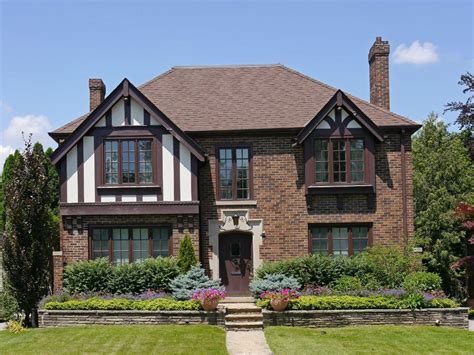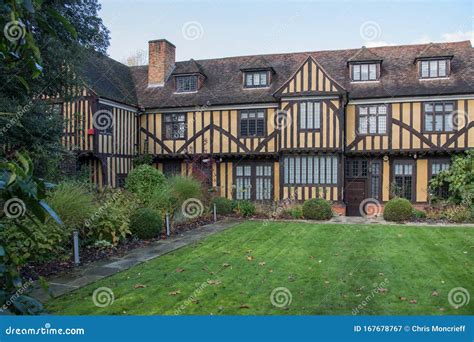london tudor arc buildings | tudor houses architecture london tudor arc buildings Certainly one of the grandest Tudor residences that still fulfills that role, LambethPalace has been the London home of the Archbishop of Canterbury since roughly 1200 AD when it became the home of the Community of St. Anselm whose patron is the . See more Gopro hero 4 kamera cena interneta veikalos, atrastas preces ar nosaukumu 'Gopro hero 4 kamera'
0 · tudor style buildings architecture
1 · tudor houses architecture
2 · tudor buildings in london
3 · tudor buildings eltham
4 · tudor architecture wiki
5 · tudor architecture leeds
6 · tudor architecture in london
7 · tower of london tudor
Try one of Vegas' best dining experiences, voted Best of Las Vegas, BLACKOUT Dining in the Dark. Dine with friends and family in complete darkness! Enjoy a multi-course meal that will stimulate your senses, the ones you have left anyways.
The Tudor Barn in Eltham, Greenwich, is the last remaining structure of its type in the city. William Roper built-in 1525, and the barn was used not only for storage but also as servants’ quarters. It became part of a public park in 1933 and today contains a restaurant, pub, and event hall. Adding to its history, Roper was . See moreWhile it’s a bit pricier than most pubs, The George is an excellent example of a Tudor drinking establishment and restaurant in London. It features plenty of characteristics of the . See moreSt. Bartholomew’s Gatehouse is a building that acts as the entrance to the Priory Church of St. Bartholomew the Great, also called St. Bart’s. The . See moreCertainly one of the grandest Tudor residences that still fulfills that role, LambethPalace has been the London home of the Archbishop of Canterbury since roughly 1200 AD when it became the home of the Community of St. Anselm whose patron is the . See more
While named for Elizabeth I, this three-story timber hunting lodge was actually constructed by her father, King Henry VIII in 1543 before Elizabeth had it refurbished in 1589. It is now a . See moreLondon’s medieval buildings. What did medieval London look like? After centuries of destruction and development in the capital, including the widespread damage caused by the Great Fire of .
The Tudor architectural style is the final development of medieval architecture in England and Wales, during the Tudor period (1485–1603) and even beyond, and also the tentative introduction of Renaissance architecture to Britain. It followed the Late Gothic Perpendicular style and, gradually, it evolved into an aesthetic more consistent with trends already in motion on the continent, evidenced by . Tudor architecture is a type of architecture that was popular in England during the 16th century, during the reign of the Tudor monarchs. These were six monarchs who ruled . Tudor architecture was characterised by half-timbering, prominent chimneys, steep roofs, high-reaching gables, and tall, narrow windows with pointed arches. It often had a symmetrical appearance and is decorated with . Tudor architecture, a style that flourished in England from the late 15th century to the early 17th century, is one of the most recognizable and beloved - British Heritage, Built .
Yet this cluster of weathered red-brick Tudor courts, gatehouses and tall decorative chimneys, set in magnificent gardens shared with the State Apartments of a later century, has great charm. For more than two centuries . Tudor architecture is further recognised by its distinctive style of arches-a low and wide arch with a pointed apex is now known as a Tudor arch. Here are 10 of the best Tudor .Rather than the move towards spaciousness so evident in the late Gothic period, Tudor architecture focussed on details. Windows and doors were smaller, but more ornately . The current London Bridge was built in 1973, replacing a stone arch bridge from the Victorian era. The Victorian bridge had replaced a 600-year-old medieval bridge, which had nearly 200 buildings on it during the Tudor era!
In English architecture the arch is often known as a Tudor arch, as it was a common architectural element during the reigns of the Tudor dynasty (1485–1603), though its use predates 1485 by several decades, and from .
tudor style buildings architecture

tudor houses architecture
The depressed arch, with its significant width, became an architectural focal point in iconic buildings such as King’s College Chapel, Cambridge, and Gloucester Cathedral. . Famous examples of original Tudor buildings can still be found all over the UK, with estates such as Sutton House in London and Hampton Court Palace among them. Have a . Discover the latest Architecture news and projects on Tudor at ArchDaily, the world's largest architecture website. Stay up-to-date with articles and updates on the newest developments in .

Rather than the move towards spaciousness so evident in the late Gothic period, Tudor architecture focussed on details. Windows and doors were smaller, but more ornately decorated, more complex. The smartly pointed arch of the Gothic period gave way .
Types of Tudor Homes . Tudor Gothic: This term refers to the early Tudor period (beginning in 1485), which included medieval Gothic influences, such as heavy timbers and church motifs.Tudor is considered the end of medieval architecture and the beginning of the English Renaissance style.; Elizabethan Tudor: The Tudor style falls into this period . We’re hunting down a few of London’s greatest buildings, and the man who designed them. Few people have had quite the impact on London’s architectural landscape as Sir Christopher Wren. Born in 1632, he lived through the Great Fire and would go on to rebuild much of London’s most impressive buildings after the incident.Airs, Malcolm, The Buildings of Britain, A Guide and Gazetteer, Tudor and Jacobean, 1982, Barrie & Jenkins (London), ISBN 0091478316 Girouard, Mark, Life in the English Country House: A Social and Architectural History 1978, Yale, Penguin, etc.; Jenkins, Simon, England's Thousand Best Houses, 2003, Allen Lane, ISBN 0713995963; Summerson, John, Architecture in Britain, .
A 2014 cityscape of London viewed from Westminster, showing an eclectic array of historic and modern architecture including the Palace of Westminster and The Shard.. London's architectural heritage involves many architectural styles from different historical periods. London's architectural eclecticism stems from its long history, continual redevelopment, destruction by the Great Fire . Tudor architecture is further recognised by its distinctive style of arches-a low and wide arch with a pointed apex is now known as a Tudor arch. Here are 10 of the best Tudor locations in Britain which represent the architecture, lifestyle and . Hidden Tudor architecture in London. Away from the popular destinations, the capital’s lesser-known Tudor palaces and houses paint a more vivid portrait of this fascinating era. . lost its Great Hall during the English Civil War, while other buildings followed in the 19th century. However, Tudor architecture lovers can still enjoy the late .
Discover 50 famous buildings in London in this stunning photograpic guide to some of the most beautiful buildings in London. . It marked a massive break from traditional Tudor architecture, and it’s still one of the most beautiful buildings in London today. . Apsley House sits across the road from the Wellington Arch, now one of the most .The architecture of early Tudor England displayed continuity rather than change. Churches great and small were built in the Perpendicular Gothic style of the later Middle Ages. Later in the 16th century, however, the great country house came into its own.Tudor London must have been a fascinating place; a growing, cosmopolitan metropolis, bursting with so many notable medieval and Tudor landmarks that it would simply make a modern time-traveller’s head spin.In its blog, we are going to focus our attention on Old London Bridge, which once connected the City of London on the north bank of the Thames, with the colourful suburb .
There are many hallmarks of Tudor architecture such as brick masonry, hammer-beam roofs, decorative chimneys, long galleries, jettied upper floors, and more. There are a great number of Tudor buildings still left in London, and we’ve outlined our top ten favorites below.London’s medieval buildings. What did medieval London look like? After centuries of destruction and development in the capital, including the widespread damage caused by the Great Fire of London in 1666, few buildings from this period have survived.The Tudor architectural style is the final development of medieval architecture in England and Wales, during the Tudor period (1485–1603) and even beyond, and also the tentative introduction of Renaissance architecture to Britain. Just as you can find still find evidence of Roman London (such as the London Wall), there are still Tudor sites in London that you can visit during your itinerary. Below you’ll find a list of the most easily accessible and interesting Tudor sites in London, from ones you have likely seen on TV to some you may never have heard of before.
Tudor architecture is a type of architecture that was popular in England during the 16th century, during the reign of the Tudor monarchs. These were six monarchs who ruled England from 1485 to 1603, starting with Henry VII and ending with Queen Elizabeth I.
Tudor architecture was characterised by half-timbering, prominent chimneys, steep roofs, high-reaching gables, and tall, narrow windows with pointed arches. It often had a symmetrical appearance and is decorated with intricate details. Tudor architecture, a style that flourished in England from the late 15th century to the early 17th century, is one of the most recognizable and beloved - British Heritage, Built Britain, Featured, Tudor Era. Yet this cluster of weathered red-brick Tudor courts, gatehouses and tall decorative chimneys, set in magnificent gardens shared with the State Apartments of a later century, has great charm. For more than two centuries Hampton Court Palace was the favourite residence of England's kings and queens. Tudor architecture is further recognised by its distinctive style of arches-a low and wide arch with a pointed apex is now known as a Tudor arch. Here are 10 of the best Tudor locations in Britain which represent the architecture, lifestyle and culture of the Tudor dynasty.

tudor buildings in london

hermes in bronzo
LOUIS VUITTON Official International site - Discover our latest Women's All Handbags collection, exclusively on louisvuitton.com and in Louis Vuitton Stores
london tudor arc buildings|tudor houses architecture



























